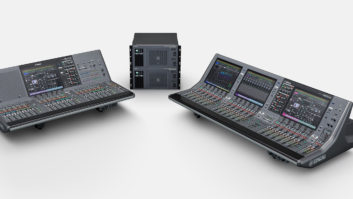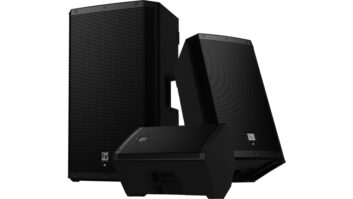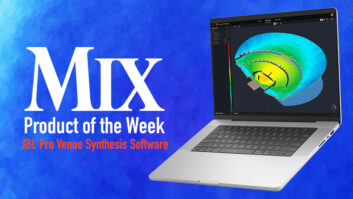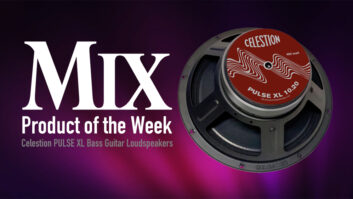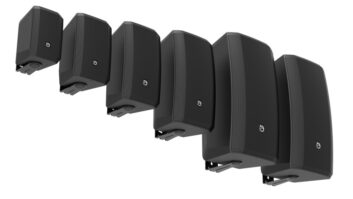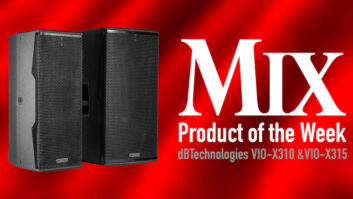At Sweden’s Tierp Arena—the first European drag racing track to be accredited by the National Hot Rod Association—a dozen pairs of Renkus-Heinz PNX102/LA line array modules provide audio along the length of the racetrack. In any sports venue, whether an open stadium or an enclosed arena, and regardless of the sporting event, there is one overriding goal for the PA system: speech intelligibility. Happily, technological advances have not only brought about improvements in intelligibility but also overall audio quality.

There are three main technological factors driving a general improvement in sports venue sound system quality, according to Jack Wrightson, founding principal at Wrightson, Johnson, Haddon & Williams, an acoustical and audio, video, lighting and data systems consulting firm based in Dallas, TX. “One is that we have standardized methods for calculating and testing intelligibility,” he says. WJHW’s sports venue projects run the gamut, from the world’s largest domed structure, the Dallas Cowboys’ AT&T Stadium, to university facilities.
The Speech Transmission Index (STI), first introduced in 1980, has since evolved into the less complex STIPA, or STI for Public Address systems. STI has been integrated into various international standards and measuring equipment.
Using STIPA, says Wrightson, not only is speech intelligibility improved, but so too is musical clarity. “That’s not surprising, because the same electroacoustic factors that generate intelligibility are the same things that give us musical clarity as well,” he observes. “It’s a tool which I think has become very important in both the design and set-up of systems.”
The Walters-Storyk Design Group (WSDG), a global full-service acoustics and audio/video design firm with offices in the United States, Europe and South America, worked on AV equipment and acoustical upgrades to three of the football stadiums that will be used during the quadrennial FIFA World Cup Brazil, which runs from June 12 through July 13. Those include the country’s largest sports venue, the 96,000-capacity Maracanã Stadium in Rio de Janeiro, built in 1950; Mineirão Stadium— Brazil’s second largest stadium—in Belo Horizonte, constructed in 1965 and seating 62,160; and the 25,000-seat Independencia Stadium, also in Belo Horizonte, also completed in 1950.
“For all three projects, we used the most sophisticated electroacoustic simulation tools available in order to create a model of the stadiums, and to predict the electroacoustical parameters required to ensure the highest sound quality such as SPL [sound pressure level] distribution as well as STI around the stadium,” says Renato Cipriano, partner and general manager at WSDG’s Brazil office in Belo Horizonte.
“We have increasingly better ways to control where the sound is going,” says Wrightson, checking off the second factor driving sports venue sound improvements. Acoustical treatment is certainly part of that, although not in every sports venue.
“Even indoors in the dome stadiums, we get real resistance because of the sheer size of the buildings,” he reports. “If something costs even $2 a square foot, when you spread that over a five-acre roof, it gets into the millions of dollars, and people don’t want to spend it. But the arena crowd is all over acoustical treatment; they’re much more multipurpose, and they want to have a great reputation for concerts and other events.”
In the case of the open-air Mineirão Stadium, reports Cipriano, “Our primary facility management concerns focused on the level of sound comfort and intelligibility in relation to the RT60 reverberation time required to meet stipulated FIFA STI mandates. We identified extensive sound reflections throughout the arena and concluded that acoustical absorption be installed at the inner ring of the audience sector to achieve the required STI values.”
As for speaker technology improvements, Wrightson continues, “Even in line arrays, we’re starting to get products with horizontal pattern control, which we didn’t have a few years ago. [Manufacturers] started realizing this would improve it, and not only that, we could sell a bunch of them. A concert rig is a great sale for someone, but it has a fraction of the speakers that an NFL stadium has in it. It’s worth developing products that work for that.”
Steerable array technology is also interesting, but not suited to every venue. WJHW installed the first outdoor implementation, a Meyer system at Cal Berkeley, according to Wrightson. “We’re also using a similar product for the upper deck at the Carolina Panthers install, which isn’t open yet. The limitation, in addition to cost, is the maximum SPL,” he says.
Although Independencia Stadium is not yet fully equipped for financial reasons (with just one month to the start of the World Cup), the WSDG-specified system is an example of the quantities required in even a facility of its modest size. According to Cipriano, the gear complement includes 13 clusters of 10 D.A.S. Aero 12 line arrays speakers with 160 D.A.S. Artec 26 speakers to cover areas in acoustic shadow. Distributed around the venue in the public and administration areas are an additional 41 D.A.S. Artec 4T wall- and ceiling-mount speakers and 166 D.A.S. Artec CL6-T 0 in-ceiling drivers.
In Maracanã, which in 1983 accommodated a reported 250,000 fans for a KISS concert, WSDG specified 24 main clusters, each of three Electro-Voice speakers. WSDG was not part of the final design/installation process at Minerião Stadium, Cipriano says; “All I know is that they installed Community speakers in 24 clusters of five speakers each around the catwalk ring,” he says.
Presenting a considerable challenge to intelligibility is Tierp Arena in central Sweden. Tierp is the first European drag racing track to be accredited by the NHRA (National Hot Rod Association).
“The key to the audio for a drag racing audience is, of course, to make it loud so the audience can hear what the commentator is saying above the noise of the cars,” says Karl-Gustaf Kahlau, of Luthman SMTTS AB, Renkus-Heinz distributor for Sweden. The solution included powerful line arrays that were also compact enough not to obscure sightlines, he says.
“With our help, they decided on low-profile PNX102/LA line array modules, 24 boxes in total, bolted in pairs to customized steel ground frames to make 12 independent freestanding clusters, that they could place along the length of the racetrack at ground level, pointing upwards towards the audience.”
Kahlau adds, “The critical factor, though, is that the commentary can be heard over the massive ambient noise. These compact line array modules are matched to high-efficiency Powersoft amplifiers via a weather-insulated network of pre-installed underground cables under the racetrack, and weatherproofed ground facility panels, all running back to the amp rack room in the main building.”
Loudspeaker choices and positioning are critical in any sports venue public address installation, of course, but any system is exactly that—a system. One other critical component is signal distribution technology.
“The third thing,” says Wrightson, continuing his list of factors influencing audio improvements in sports venues, “is the flexibility we get with digital audio networks. That doesn’t make things more intelligible, but it does improve our flexibility and operational ability.” For example, he says, “We have clients who want to move the console all sorts of places. This allows us to do that much more easily and cheaply.”
Cipriano reports that signal distribution was most certainly an important factor in the World Cup stadium revamps with which WSDG was involved. “One of the critical aspects is about choosing the appropriate distribution system,” he says. “All stadiums require long cable runs to distribute the audio signals. For the Independencia Stadium, we chose a Stagetech Nexus system that has a great functionality and reliability. At Maracanã, the chosen system was an Electro-Voice Netmax N 8000 that run all 24 clusters and has a friendly interface.”

